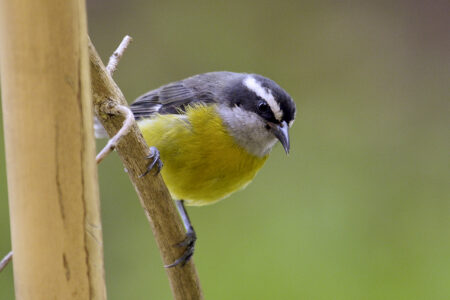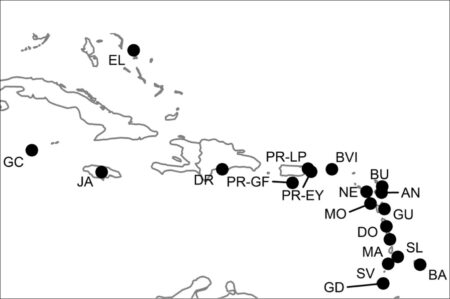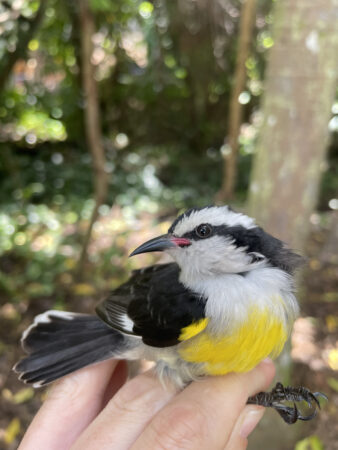
BirdsCaribbean are bringing you some highlights from the Journal of Caribbean Ornithology in our new feature “Just Published in JCO”. Here Zoya Buckmire, the Lead Copy Editor for the Journal of Caribbean Ornithology, tells us all about an article exploring the topic of Avian Malaria using data from Bananaquits.
Like humans, birds are susceptible to parasitic infections, including avian malaria. Similarly, they show variations in hemoglobin structure (a protein contained in red blood cells that is responsible for the delivery of oxygen to tissues) that may influence their susceptibility to these infections. Using one of the most widespread West Indian species, the Bananaquit (Coereba flaveola), Humphries and Ricklefs aimed to relate variation in hemoglobin structure to avian malaria infection across several islands. In this paper, they present the results of this fascinating study, with suggestions for appropriate markers for further biogeographic analyses.

This study came about from Humphries’ general interest in the varying distribution of avian malaria parasites and infections across the Caribbean. Bananaquits were a great focal species for this study, being so widespread throughout the region and with documented variability in their parasites among populations, even on the same islands!
The existence of a long-term dataset of Bananaquit blood samples, collected from 2004 to 2017 by Ricklefs and numerous former students of his graduate lab, perfectly set the scene for Humphries to dig into her questions. As the samples were already collected, Humphries was able to skip the field work and jump straight into data analysis. Humphries comments “Although I prefer being in the field in general, data analysis for this project was an adventure!”
She was able to design and optimize the protocols to analyze the blood samples, looking for a link between the structure of specific blood markers and infection by avian malaria parasites.

While the authors intended to study the structure of both alpha and beta globin (two key components of hemoglobin), they could not isolate the beta globin, they say “This is especially unfortunate because in humans, it is the beta globin that enables malaria resistance”. This important link may have had implications for human health and further studies of the disease in birds. For the alpha globin, the results were still not ‘significant’, as they did not find any relation between it and susceptibility to avian malaria.
Even though the study results were not as expected, there is always an opportunity to learn. Humphries still felt it was important to publish their results, and we agree. “Publishing null results is a good thing to do! This will save the next researcher the effort of asking the same questions I did and may stimulate someone else to track down that beta globin after all!” Plus, the alpha globin has potential as a genetic marker for further biogeographic studies, and this sets the foundation for a better understanding of population variation, avian malaria, and by extension, malaria in humans.
Download the full paper here: Humphries, M.B., and R.E. Ricklefs. 2023. Alpha-globin variation does not predict avian malaria infection in the West Indian Bananaquit (Coereba flaveola). Journal of Caribbean Ornithology 36:1–16. or use this link https://doi.org/10.55431/jco.2023.36.1-16
The Journal of Caribbean Ornithology publishes the peer-reviewed science on Caribbean birds and their environment that is so important to inform conservation work. All of the publications are free and open-access.
